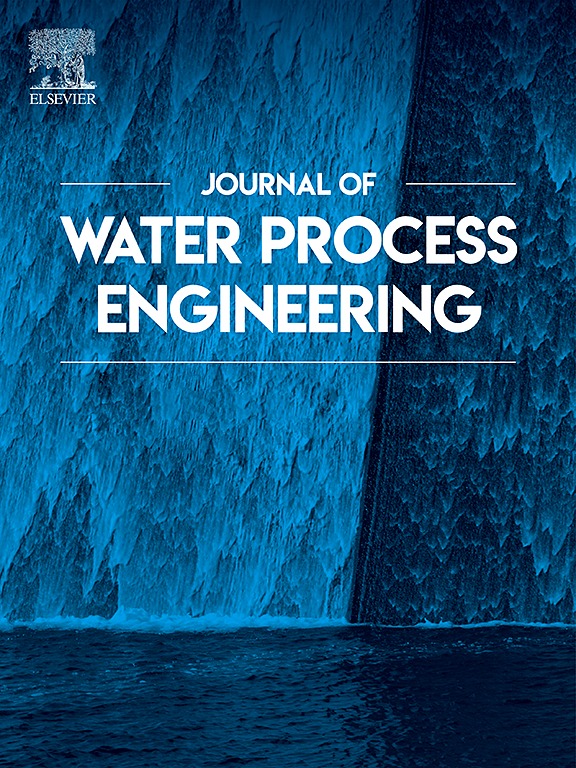Indigenous fungi derived from a municipal wastewater treatment plant with rapid flocculation of Chlorella sp.: Convenience, mechanisms, and conditions optimization
IF 6.3
2区 工程技术
Q1 ENGINEERING, CHEMICAL
引用次数: 0
Abstract
Few indigenous fungi species that can flocculate microalgae in wastewater treatment plants (WWTPs) have been reported, and more effective fungi strains for microalgal flocculation remain to be identified. In this research, a flocculating fungi strain was screened from a WWTP. The flocculation performance and properties were assessed. The underlying mechanisms were elucidated through extracellular polymeric substances (EPS) analysis. The flocculation conditions were optimized by the response surface method (RSM). The findings indicated that the isolated strain Curvularia moringae J-26 flocculated Chlorella sp. with an efficiency of up to 97.3 % within 120 min. Curvularia moringae J-26 flocculated Chlorella sp. mainly via mycelium absorption, attributed to the protein-like (PN) and soluble microbial byproduct-like substances contained in the EPS. The optimal conditions to flocculate Chlorella sp. were the mycelium pellets dosage of 2.25 g/L at 160 rpm for 4.8 h. Curvularia moringae J-26 flocculated Chlorella sp. with good performance, which had the potential to reduce the cost of Chlorella sp. harvesting. This research provided a technical reference for Chlorella sp. harvesting and fungi application in wastewater treatment.

求助全文
约1分钟内获得全文
求助全文
来源期刊

Journal of water process engineering
Biochemistry, Genetics and Molecular Biology-Biotechnology
CiteScore
10.70
自引率
8.60%
发文量
846
审稿时长
24 days
期刊介绍:
The Journal of Water Process Engineering aims to publish refereed, high-quality research papers with significant novelty and impact in all areas of the engineering of water and wastewater processing . Papers on advanced and novel treatment processes and technologies are particularly welcome. The Journal considers papers in areas such as nanotechnology and biotechnology applications in water, novel oxidation and separation processes, membrane processes (except those for desalination) , catalytic processes for the removal of water contaminants, sustainable processes, water reuse and recycling, water use and wastewater minimization, integrated/hybrid technology, process modeling of water treatment and novel treatment processes. Submissions on the subject of adsorbents, including standard measurements of adsorption kinetics and equilibrium will only be considered if there is a genuine case for novelty and contribution, for example highly novel, sustainable adsorbents and their use: papers on activated carbon-type materials derived from natural matter, or surfactant-modified clays and related minerals, would not fulfil this criterion. The Journal particularly welcomes contributions involving environmentally, economically and socially sustainable technology for water treatment, including those which are energy-efficient, with minimal or no chemical consumption, and capable of water recycling and reuse that minimizes the direct disposal of wastewater to the aquatic environment. Papers that describe novel ideas for solving issues related to water quality and availability are also welcome, as are those that show the transfer of techniques from other disciplines. The Journal will consider papers dealing with processes for various water matrices including drinking water (except desalination), domestic, urban and industrial wastewaters, in addition to their residues. It is expected that the journal will be of particular relevance to chemical and process engineers working in the field. The Journal welcomes Full Text papers, Short Communications, State-of-the-Art Reviews and Letters to Editors and Case Studies
 求助内容:
求助内容: 应助结果提醒方式:
应助结果提醒方式:


